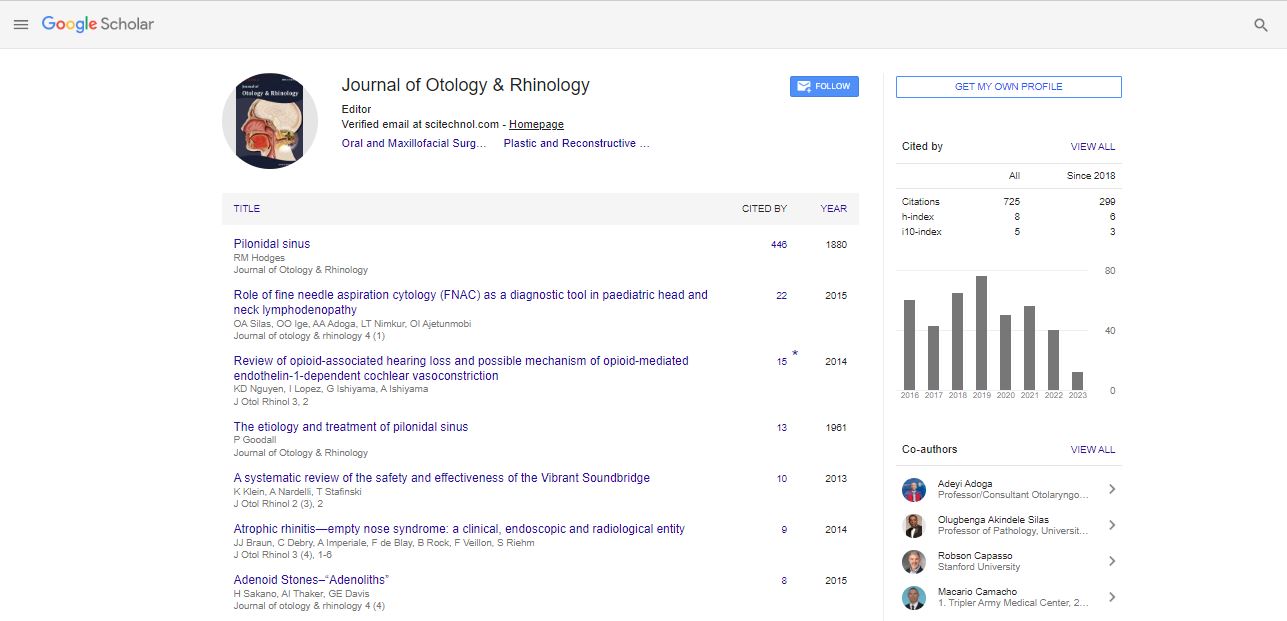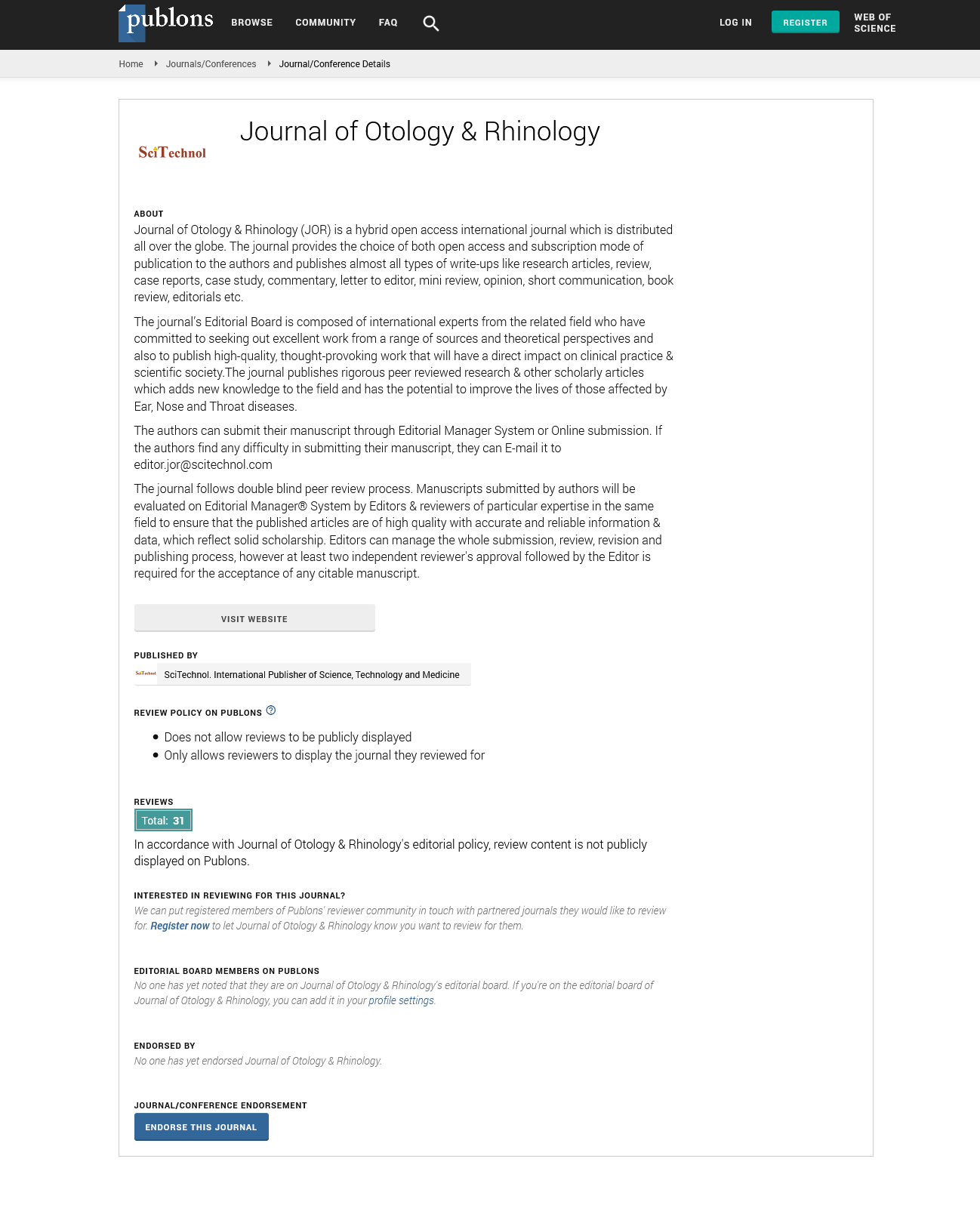High resolution computed tomography correlation with round window niche visibility via the facial recess during cochlear implant surgery in children
Leison Maharjan, Rabindra Bhakta Pradhananga and Sharma Poudel
Institute of Medicine, Tribhuvan University, Nepal
: J Otol Rhinol
Abstract
Background: The success of cochlear implant surgery via facial recess approach depends on the visualization of round window niche (RWN). Due to anatomical variations in the position of RWN, surgeons often encounter difficulties. Furthermore, cochlear implantation in children has more technical difficulties due to differences in orientations among various structures of temporal bone especially the visualization of RWN. These difficulties can be avoided if RWN visibility can be predicted preoperatively. However, the role of imaging in this regard is controversial. Therefore, we aimed to assess whether preoperative High Resolution Computed Tomography (HRCT) measurements are useful in predicting the actual intraoperative visualization of the RWN. Methods: This prospective observational study was conducted in Department of Otolaryngology-Head and Neck Surgery and Department of Radiology and Imaging, Institute of Medicine, Tribhuvan University, Nepal. Cochlear implant candidates aged 16 years and less were included in the study. Total 30 surgeries were enrolled in the study. Preoperative HRCT measurements of 2 angles and 3 distances were taken: 1) External auditory canal (EAC)-Basal turn of cochlea (EAC-Basal turn) angle 2) EACFacial nerve angle 3) EAC-Sigmoid sinus distance 4) Facial recess width 5) Oval window-round window (OW-RW) distance and correlated with intraoperative RWN visibility: i) type A, difficult to visualize ii) type B, partially visible iii) type C, fully visible. ANOVA test was used for comparison of normally distributed pre-operative HRCT findings and intra-operative visibility of RWN. Kruskal- Wallis followed by Mann-Whitney U Test was used for non-normally distributed parameters. Results: The most common type of RWN visibility was of type C (52.2%) followed by type B (30.4%) and type A (17.4%). HRCT parameters were not found to be statistically significant with RWN visibility. Conclusions: HRCT measurements were not useful in predicting the visibility of round window niche through facial recess during the cochlear implant surgery in children.
Biography
E-mail: leison.maharjan@gmail.com
 Spanish
Spanish  Chinese
Chinese  Russian
Russian  German
German  French
French  Japanese
Japanese  Portuguese
Portuguese  Hindi
Hindi 


